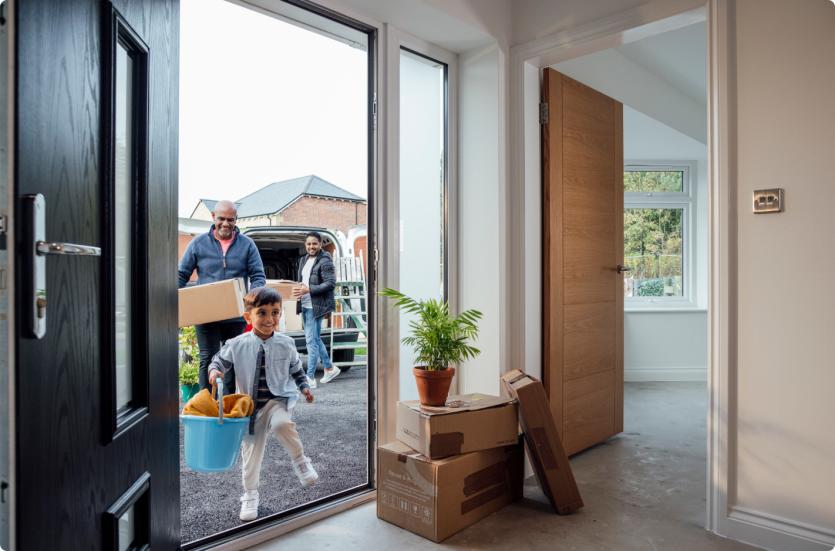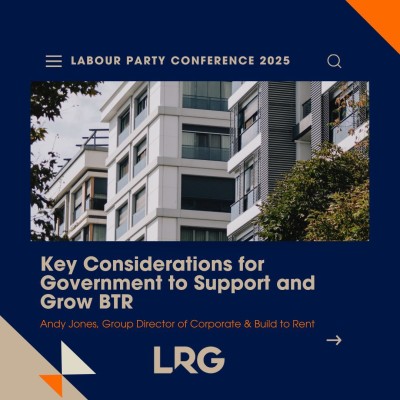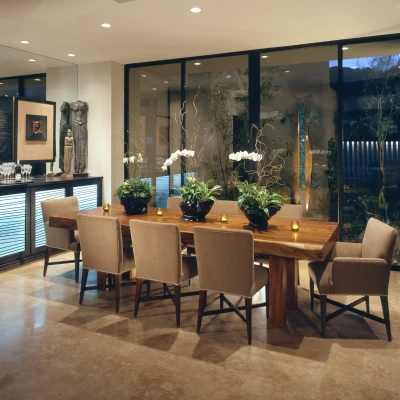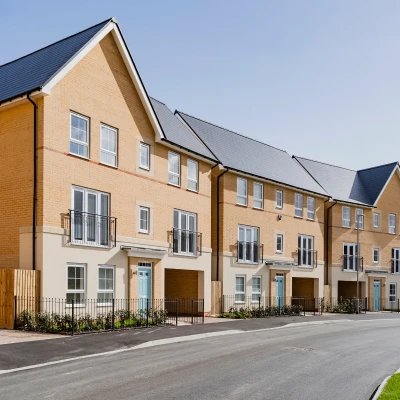What's next for BTR - RICS Property Journal

Recent media commentary on the private rented sector (PRS) has tended to focus on negatives - tax and regulatory changes, rising mortgage rates and a disproportionate focus on scandals associated with ‘rogue landlords’ – which, as the Government has recognised, represent only as very small proportion of the industry.
The result of the tax and regulatory burden is a fall of nearly 50% in the number of properties available to rent: Propertymark reports that approximately 30 properties were available to rent per estate agent branch in March 2019, whereas by March 2022 that figure had dropped to just 15.6, and Leaders Romans Group (LRG)’s own estate agencies paint a similar picture.
But simultaneously some of those very issues, specifically interest rate rises and the rise in the cost of living create opportunities, not only for the development industry but for tenants too.
The growth of Build to Rent
Build-to-Rent (BTR) is the UK’s fastest-growing sector and this trend looks set to continue in 2023 and beyond. In the past ten years, the British Property Federation (BPF)’s Build to Rent Q1 2022 report reveals that the number of completed BTR homes rose by 19% during 2021, reaching a new high of 72,668 units per annum.
Earlier iterations of the BTR model were designed to appeal primarily to Gen Z and Millennial cohorts living in cities. But regional growth has now surpassed that of the Capital. The BPF analysis found that 5,802 completed BTR units were in London but 5,901 were elsewhere. Regional BTR grew 16% year-on-year, to reach 58% of the total BTR sector pipeline; London, meanwhile, lags behind slightly with 12% year-on-year sector growth and 42% of the total.
BTR suburban communities
This fast-emerging form of Build to Rent (BTR) focuses on family homes, rather than one person apartments. It has been known interchangeably as ‘suburban BTR’ or ‘single family housing’. But having thoroughly researched the topic and consulted with experts from various disciplines from across LRG we have coined the term ‘BTR suburban communities’.
We believe that this description best depicts this new offer: houses, located outside urban areas, which despite consisting of individual units, maintain the strong sense of community which made BTR such a success.
A BTR suburban community offers much more than just a new house. It’s a community in which an individual or family occupies a house which can be made their own - but could be swapped for another as the family’s needs change: rather than building an extension, the family could simply move to a larger house; if they developed an interest in gardening, they could move to a house with more outside space; as empty-nesters, they could move again – with each move being free from the complications of buying and selling.
Typically a BTR suburban community offers 24/7 security, all-inclusive bills and a range of additional services such as cleaning, gardening and even dog-walking. Some are powered by a district heating system, using clean, renewable energy and removing the need for a boiler – or even an energy bill. Future-proofed, each home will provide an EV charging point. The range of services typically available include a cinema, a BBQ area, a residents’ lounge, or perhaps a dining or party suite.
Like traditional BTR, BTR suburban communities prioritise health and wellbeing, supporting active travel in the form of bicycle hire/storage, access to good public transport links and car clubs. They might also provide outdoor spaces for exercise and recreation, a gym, exercise studio or pool. And they typically support remote working though co-working spaces with meeting rooms, with superfast broadband.
Administration is simple and accountable, with flexible leases, predictable rents, secure tenancies and moves free of fees and other costs.
New considerations
Bearing in mind that the most successful BTR schemes to date are those which are ‘Instagramable’, a high standard of design must be met. The hospitality sector has considerable ability to drive brand-led loyalty: to meet the demands of resitality[1], branding is an important consideration.
Design considerations might include maximising the space, ensuring ample storage and providing high quality, integrated appliances and durable flooring which can look as good as new when the property is re-let. High speed broadband is a priority, as being connected from Day One will invariably make the transition smoother from the tenant’s point of view.
The industry must think carefully about choice. Choice is the hallmark of good service, but tenants can’t necessarily be given a full choice of kitchens, appliances, flooring, decoration and (if provided) furnishings – certainly, the second and subsequent tenants can’t have this choice - but does that then erode the service that they receive?
The BTR sector faces demands that are unknown in the private sales market, or even in the private rented sector. In The Modern Renter: Inside the tenant’s mind, Hatch Insight ascertained that 59.8% of renters expect their home to be furnished ‘to some degree’ – but that 88.4% of those wishing to move into a Build to Rent scheme don’t want a ‘cookie cutter home’, expecting developments to use different design schemes throughout. No fewer than 37.9% stated that they were likely or highly likely to pick somewhere that was professionally designed. The survey results also showed that 50% of renters wanted kitchenware included, 54.7% expected cleaning equipment to be provided and 41.9% wanted the property to be well decorated.
An important facet of LRG’s work is advising on site identification and on how to maximise a development opportunity, taking into account the volume and scale of development, the local market conditions and ongoing trends. Viability hinges on these issues, perhaps more so in a sector in which service is paramount.
In a traditional housing scheme, it is generally accepted that 850 residential units are required to sustain a small shop, and in most cases the commercial operator won’t be in place until the scheme is complete. Within the BTR market, a more up-front approach to commercial and community spaces is required, if the ‘service’ element of the offer is to be realised from the outset.
Responding to changing circumstances
The most successful schemes respond appropriately to changing trends, including the greatest disruptor of them all: the pandemic. Research by Optim in 2020 looked into the impact of Covid on lifestyles, and it is clear that the evolution of BTR suburban communities is entirely synonymous with changed priorities. For example, 87% of respondents said that wellbeing is important, with 83% saying that it would impact on their property choices; 88.7% would like a dedicated workspace; 88% placed a high value on outdoor areas; 98.4% wanted faster and more resilient internet and 52.6% are interested in intergenerational living.
Ultimately, BTR suburban communities achieve exactly this. They also allow residents to work or enjoy leisure activities without the expense and inconvenience which can come with owning a property.
Responding to – and encouraging - changing attitudes
To roll out BTR suburban communities on a wider scale requires a change in perspective among users, developers, investors and policy-makers.
There are numerous successful schemes in European and the US, where attitudes toward renting differ. Just 41.6% of Swiss and 50% of German adults are homeowners[2]. In many cases they rent not because they have to, but as a lifestyle choice. Property is not seen as necessary to fund retirement, or even facilitate a cheaper lifestyle during retirement: many retired Europeans live in retirement housing which attracts a 30% premium. It is simply funded differently: instead of investing in property, people choose other investments. This is possible because – whether a later living scheme, or mixed family accommodation – take-up is higher, and therefore the costs are lower.
Here in the UK, the assumption that home ownership is a financial investment often fails to take into account the costs. The average Brit buys and sells seven times in his/her life. That’s seven rounds of stamp duty, solicitors’ fees, removals costs and the many other expenses which come with buying and selling, not to mention the time and expense of adapting, modernising and maintaining a property.
Yet for the Millennial / Gen Z generations, service and convenience along with sustainability are increasingly important factors in choosing a home and a lifestyle, and so it’s no surprise that BTR suburban communities are popular among young families.
Looking ahead
BTR has only just celebrated its tenth birthday. But spanning property and service sectors, urban and rural locations and appealing to every demographic group, BTR has already come of age.
So is the rapid reinvention complete, or will BTR continue to advance in its second decade? Leaders Romans Group’s White Paper, BTR suburban communities: the next stage in the evolution of BTR suggests that BTR has significant unresolved potential, especially as it moves beyond its traditional city base, attracting substantial interest from investors, presenting opportunities for developers to diversify, and appealing to an almost unlimited market. Add to this the trends towards both renting and counter-urbanisation, and a political will to ‘professionalise’ the private rented sector, and the opportunities are limitless.
[1] In the US, the ‘resitality’ asset class is used to describe the fusion between residential and hospitality. The term was used by Mark Farmer, CEO of Cast Consultancy, in relation to the fusion between residential and hospitality by US multifamily operators in Washington, Boston (USA) - 2021 National Build to Rent Report from HomeViews Insights May 2021.
[2] Home ownership rates European countries as reported by Statistica, July 2022

Contact Us
Got a question, general enquiry or something else?
You may also like
Since we started in 1987 we have grown to one of the UK’s largest property groups, we can save you time and money by offering a range of services and expertise under one roof.



